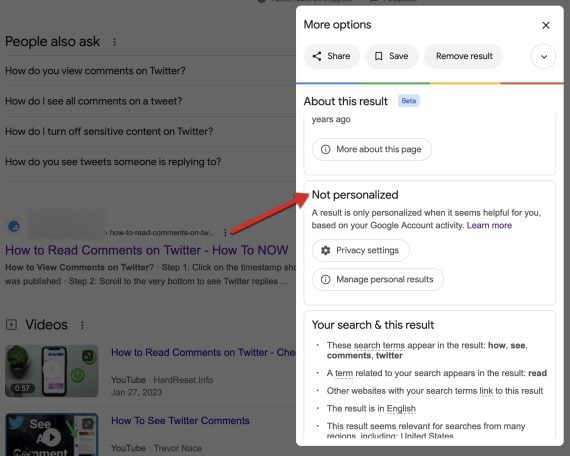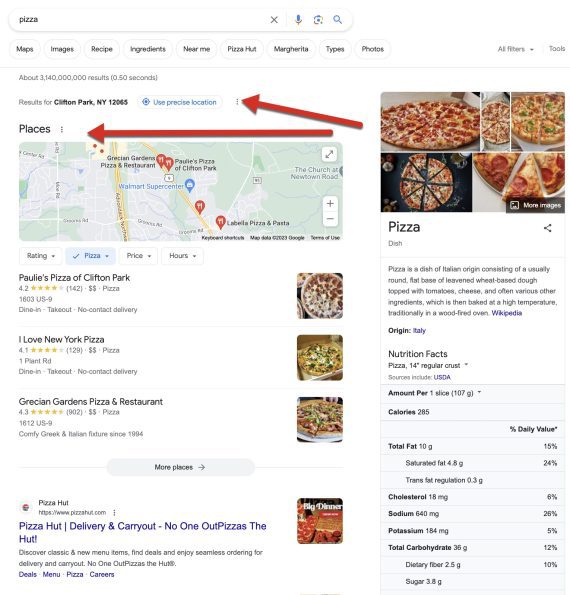How does Google personalize search results?

[ad_1]
Search results on Google vary between users. Results are allocated based on the following:
- search history,
- Interactions (clicks on organic or paid listings),
- location,
- Browser settings, such as language.
All this affects the rating and thus the exposure of your company to clients and potentials.
Personal search results
search history
A user’s past searches help Google understand that person’s intent and context behind the query. Personalization through search history is usually done in a single session — words are entered into the Google search box without interruption.
A simple way to try this kind of customization is with two default queries. First, search for “cheesecake”. Then, while you’re still on the page, search for “how to make”. Google will (usually) include “how to make cheesecake” in its suggestions.

Google suggests “how to make cheesecake” in the “how to make” search if the previous query includes “cheesecake”. Click on the image to enlarge.
However, find “how to make” in a new tab with Chrome hidden mode This often loses context, which leads Google to suggest popular results in general.
I don’t know of any way to turn off history based personalization other than in incognito mode. So keep this in mind when searching on Google, as your potential customers may see different results.
However, search Google for your keywords and related words to find out how Custom autocomplete You can show it to your audience.
Note that Google can customize results beyond a single session for users who allow Google to do so Keep their search history.
interactions
Google may provide personalized results based on clicks on organic listings, ads, or likes Find out the results. Searchers know they are seeing personalized results if Google has included a note next to previously visited sites.
Researchers can turn off this type of personalization by (1) clicking the three dots next to those results and adjusting settings accordingly, (2) signing out of Google, or (3) using incognito mode when searching.

Turn off interaction-based personalization by tapping on the three dots and adjusting the settings. Click on the image to enlarge.
location
Google will personalize search results based on the searcher’s location if it suspects that a query relates to a local business. Search for “pizza” to see this type of customization.
Location-based allocation is based on the IP address and remains in effect whether logged out of Google or in incognito mode. To change your location, try a browser-based app like GS Location Changer.
Browser language settings
Google will force search results in the language specified in the Finder browser settings or Google account. There is no way to remove this customization.
Optimized for customization
Google gives searchers only partial control over search personalization. Many do not know the personalization settings. So assume that your target customers see slightly different results than you do. Keep this in mind when tracking the rankings.
To improve your site’s chances of appearing in personalized results:
- Attract returning visitors (through retargeting ads)
- Plan your organic search strategy around multiple buying journeys, such as queries for information, hows, and “whats”.
- Create content to appear in Google Discover, such as niche trends.
[ad_2]
Source link





